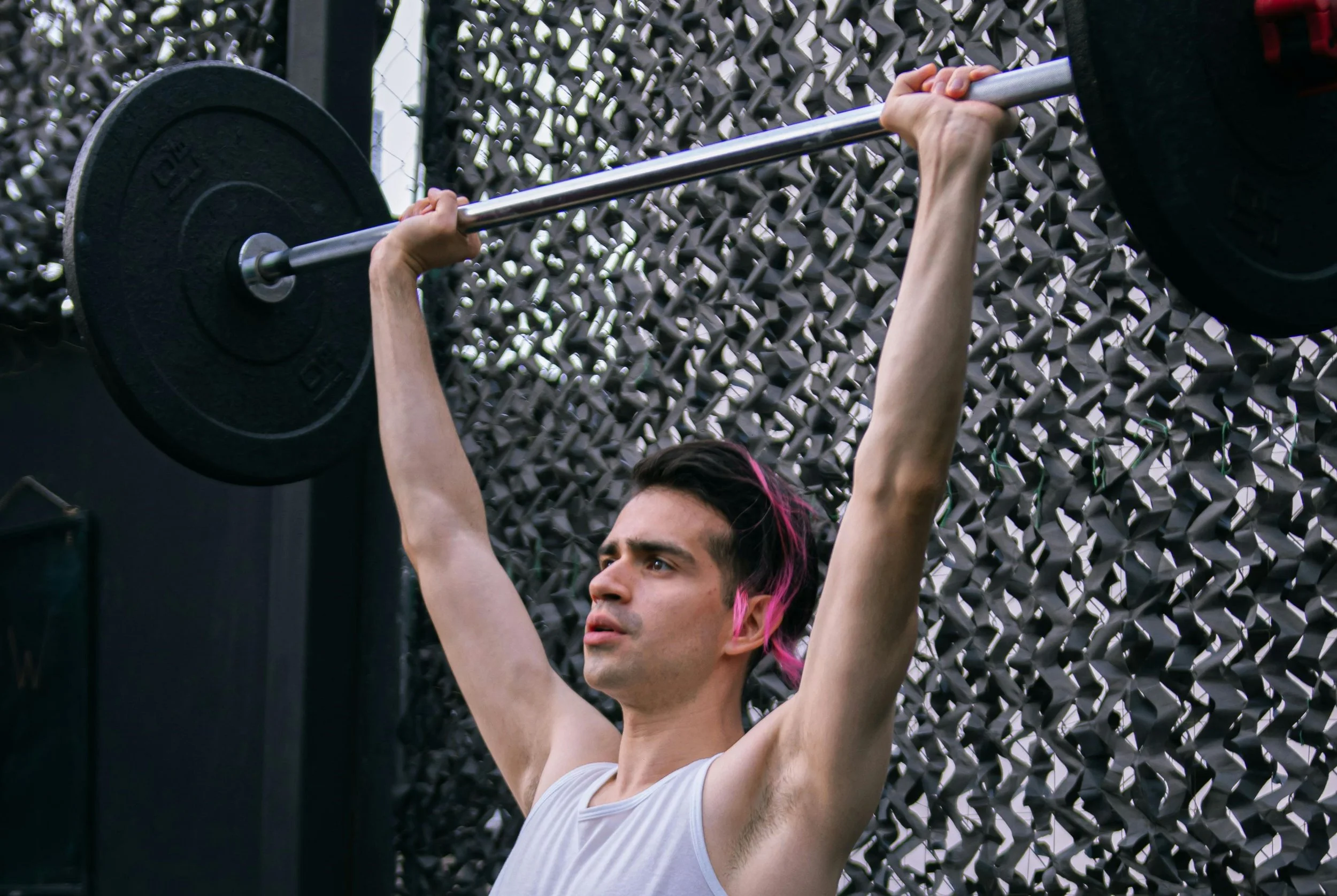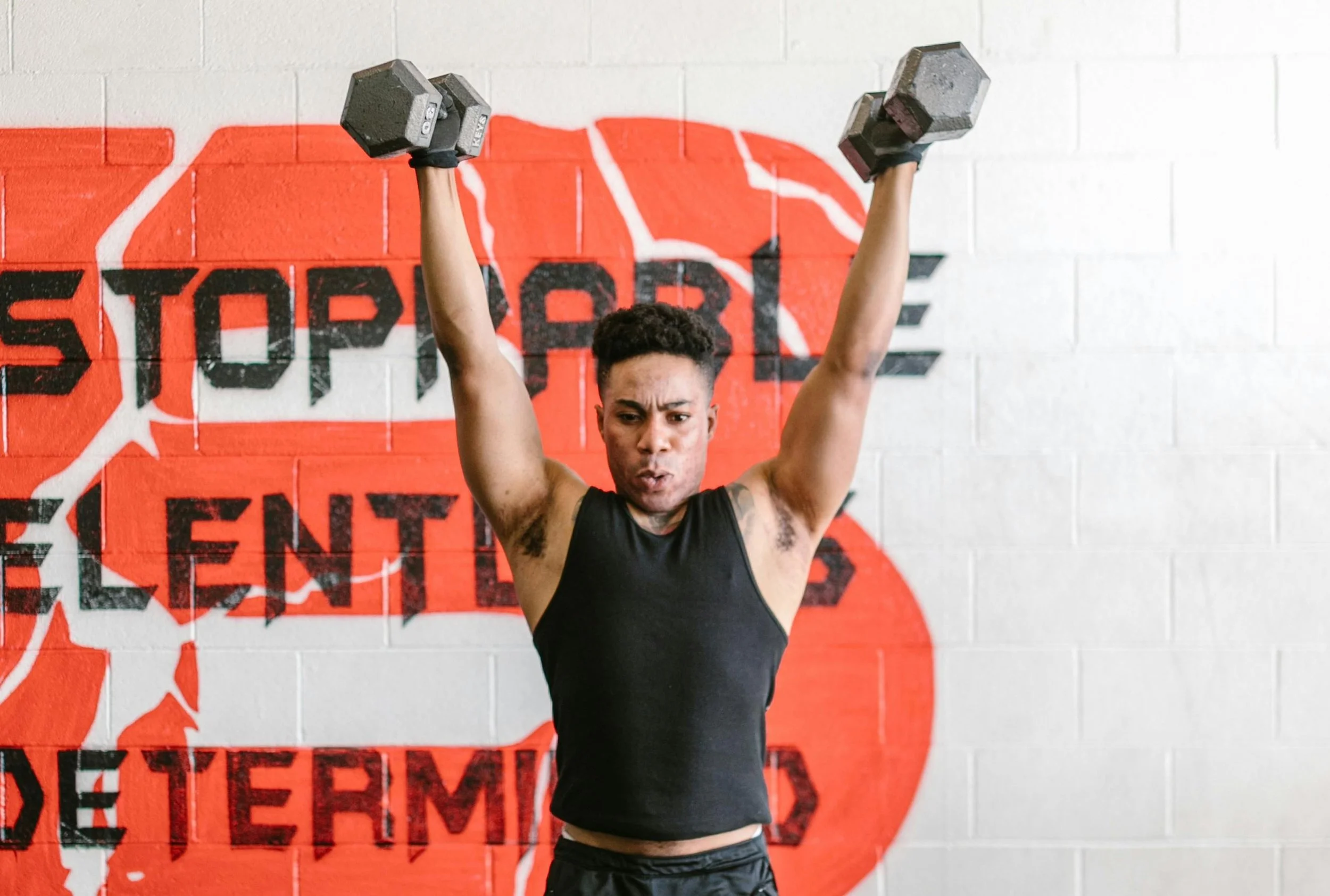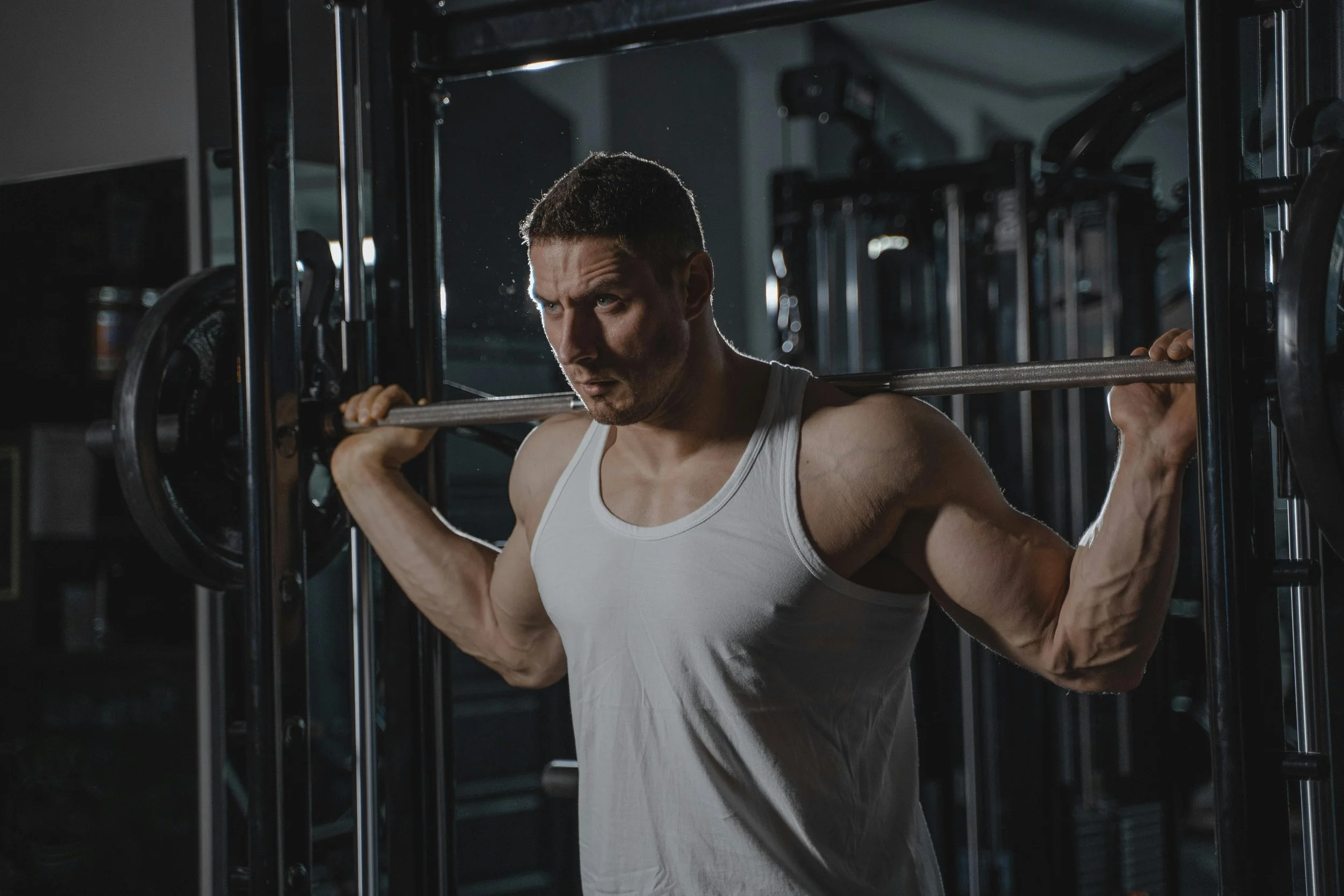How to Perfect the Overhead Press For Maximum Gains
Disclaimer: As an Amazon Associate, I earn from qualifying purchases. I also get commissions from other companies for purchases made through links in this post.
The overhead press is a powerful upper-body exercise that can enhance strength, improve muscle toning, and increase core stability. By taxing the deltoids, upper back, and chest, individuals can build more upper body strength for sports, everyday activities, and general gym gains.
The overhead press offers a range of variations, making it a versatile exercise for muscular growth. Whether you prefer the seated dumbbell shoulder press, standing overhead dumbbell press, standing barbell press, or seated barbell press, you can tailor the exercise to your specific needs and goals.
Learning how to correctly perform the overhead press is essential to remaining safe, protecting your muscles, avoiding injury, and experiencing adaptation over time. Slowly increasing the weight used with dumbbells or a barbell can lead to progressive overload in the gym, which is the cause of muscle hypertrophy, toning, and strength increases.
Keep reading to discover the main muscles targeted in the overhead press, the benefits of this upper-body exercise, and how to incorporate this beneficial exercise into your weekly routine.
What Does the Overhead Press Work?
The overhead press works the deltoids, trapezius, triceps, and core. The front deltoids work throughout the entire movement, as they are the muscles at the front of the shoulder.
Furthermore, triceps are used to stabilize the bar and help with the pressing motion. The upper chest and pectoral muscles are essential stabilizers, while the bar is anteriorly positioned.
Lastly, individuals must activate their core to prevent upper back rounding. Activating your core involves ‘bracing’ throughout the entire range of motion, especially during the middle portion of the push. Bracing your core involves keeping the bar in a straight path, keeping your hips directly under your neck, and avoiding tilting to the left or the right.
What Are the Benefits of Doing the Overhead Press?
Let's explore the exciting benefits that this exercise can bring to your fitness journey.
Enhanced Core Strength
Pressing the weight overhead stabilizes your shoulders, core, legs, and trunk, leading to more developed core muscles. The proper way to perform an overhead press involves keeping your back flat, chest up, and feet flat on the ground. Bracing your core muscles is essential to achieving a full range of motion and preventing lower back arching.
More Defined Shoulders
The main muscles involved in the standing overhead press are the medial and anterior deltoids. Since you will be taxing the shoulder muscles during the eccentric and concentric portions of the movement, these muscles are strained throughout the entire ROM. Therefore, they experience the most adaptations, leading to muscular growth and shoulder toning.
Better Bench Press
Learning to do the overhead press correctly with a barbell (affiliate link) while keeping your form safe and bracing your core can directly correlate to a better bench press. Both movements use similar muscle groups, like the deltoids, chest, and triceps, throughout the entire range of motion.
How to Perform the Overhead Press
Instructions:
Set up a barbell on the ground or an elevated squat rack in front of you.
Add plates to either side of the barbell based on your current abilities.
Place your hands just outside your shoulder width apart on the barbell, palms facing down.
Keep your elbows and forearms in a vertical position.
Prevent your elbows from flaring out throughout the movement, as this can cause excess strain on your rotator cuff and elbow joint.
Place the bar on the base of your palm, and ensure your knuckles are facing upwards towards the ceiling.
Press the barbell over your head while keeping your feet flat on the ground, chest up, and back neutral.
Keep the barbell in line with your ears as you lock out your arms at the end of the movement.
Return to the starting position at the top of your chest.
Recommended sets and reps:
3 sets x 8-12 reps for beginners at a moderate Rate of Perceived Exertion (RPE) with 45 seconds - 1 minute of rest in between
3-4 sets x 15-20 reps for endurance with 30 seconds of rest in between
5 sets x 5 reps for strength with 2-3 minutes of rest in between
3-4 sets x 8 reps for hypertrophy at a moderate RPE with 1-2 minutes of rest in between
Are Dumbbells or Barbells Better For Overhead Press?
When it comes to the overhead press, both dumbbells (affiliate link) and barbells have their unique benefits and drawbacks. Understanding these differences can help you choose the right option for your fitness journey.
A barbell overhead press lets the user easily add and use more weight to press overhead, which can lead to a more dramatic gain in strength, size, and hypertrophy. This is usually the preferred option for athletes or bodybuilders who want to gain mass in their shoulders. A barbell overhead press requires less core strength and balance than a dumbbell overhead press.
Plus, barbell overhead presses require a less dramatic range of motion, which can benefit those with tight shoulders or impingement.
A standing dumbbell shoulder press is preferred for athletes or gym-goers who want to increase their shoulder size, tone their deltoid muscles, work on core strength, and build full-body stability. Since the user will have to balance weights in either hand, it requires more coordination, mobility, and stability than the standing barbell press.
Mistakes to Avoid For the Perfect Overhead Press
Incorrect Elbow Position: One of new gym-goers' biggest mistakes when performing a strict overhead press is letting their elbows flare out to either side. Incorrect elbow position can cause a lot of pressure on the elbow joint and shoulders, leading to lower back pain.
Bar Path: The bar path should follow a nearly vertical line that leads from the top of your chest, past the ears, to the middle of your head when locked out at the top. If the bar comes out too far forward, this can lead to excess strain on your back and shoulders. If the bar is too far backward at the top of the moment, this can lead to an imbalance that could cause an accident.
Hip Position: The athlete must keep their hips under the bar and in a strong position throughout the movement. If your hips move too far backward, this can lead to bending forward, which can cause the bar to drop in front of your body. The hips should only move slightly forward during the movement to allow for the bar path to align correctly with the ears.
Not Locking Out: If you cannot lock out your arms straight at the top of the movement and push your head/neck “through” the bar, the weight is too heavy.
Using Your Legs: The last mistake that people often make when it comes to the standing overhead press or the seated barbell overhead press is attempting to use momentum or leg strength to get the weight overhead. The weight is too heavy if a person uses their legs or pushes with their feet, quads, hips, and hamstrings to achieve a lockout position. In this case, they are doing a push press, not a strict overhead press.
Final Thoughts
The overhead press is a great exercise for a weekly lifting program. It taxes the deltoids, back, and chest and can also help build mobility, stability, and core strength. Safely choosing ways to do the overhead press according to your limitations makes it a versatile and smart choice for those who want an upper-body-focused exercise to complement their lower-body strength program.
We recommend incorporating dumbbell and barbell overhead presses into the routine to challenge the stabilizer muscles, build overall strength, and improve the range of motion of the shoulders and upper back.
Frequently Asked Questions
Is overhead press and shoulder press the same thing?
The overhead press and shoulder press are the same exercise, but the overhead press is also known as the strict press or military press. Both exercises work the deltoids, triceps, trapezoid, upper chest, back, and core.
Why is the overhead press unpopular?
The overhead shoulder press can be challenging for new gym-goers or athletes who focus more on lower body strength. Plus, it targets fewer muscle groups than other compound exercises, like the bench press and squat. It often gives you ‘less’ bang for your buck than a more full-body exercise.
In addition, those who have weak back muscles or poor low-to-mid back mobility will find that pressing the weight overhead can lead to back strain and prevent the arms from achieving the safe lockout position.
Furthermore, for athletes who focus on bodybuilding and developing a specific type of figure, the overhead press does not provide the optimal stimulus for muscle growth compared to other upper-body exercises.
Lastly, if you already have shoulder issues or an impingement, too much pressing and overhead movements can create issues with the subacromial space.
Why is the overhead press so hard to progress?
The overhead press exercise can be hard to progress over time due to the differences in the variations, smaller muscle groups utilized, and technique required. For some who prefer the seated overhead press compared to the standing position, this could lead to different weights used. For others who are new to the gym or who only work the shoulder muscles 1x per week, developing stronger deltoids can be challenging with overhead presses.
Main image credit: Ketut Subiyanto / Pexels
The information provided in this article is for educational purposes only and is not intended as a substitute for professional medical advice, diagnosis, or treatment. Always seek the guidance of your physician or other qualified health provider with any questions you may have regarding a medical condition. Never disregard professional medical advice or delay in seeking it because of something you have read in this article.










